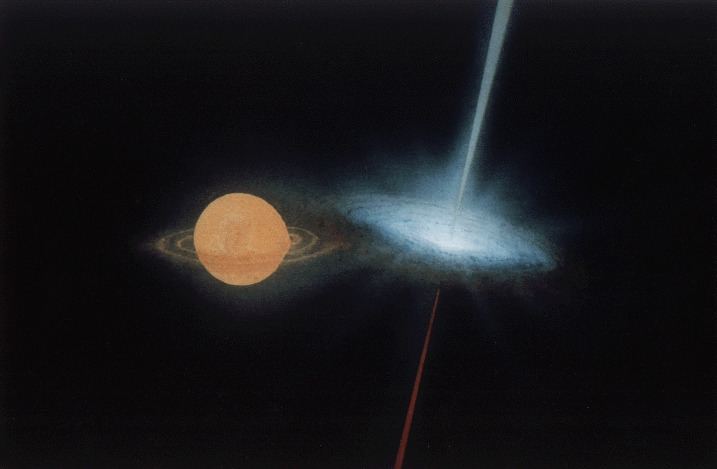 | ||
A microquasar, the smaller version of a quasar, is a compact region surrounding a black hole with a mass several times that of our sun and its companion star. The matter being pulled from the companion star forms an accretion disk around the black hole. This accretion disk may become so hot, due to friction, that it begins to emit X-rays. The disk also projects narrow streams of subatomic particles at near-light speed, generating a strong radio wave emission. The first microquasar SS 433, was discovered in 1979. It was thought to be the most exotic case until similar objects were discovered in 1994, such as GRS 1915+105.
In some of the streams of subatomic particles, the particles appear to be travelling faster than the speed of light, an illusion called superluminal motion, this illusion is caused by sublight speed particles being projected at a small angle relative to the observer.
Felix Mirabel, and Luis Rodriguez were awarded the Bruno Rossi Prize of the American Astronomical Society in 1997 for their discovery of the first microquasar, GRS 1915+105.
Due to the smaller size of microquasars, many of the effects are scaled differently to normal quasars. In quasars, the mean temperature of the accretion disk is several thousand degrees, in a microquasar the mean temperature is several million degrees. The average size of the accretion disk of a quasar is 1,000,000,000 square kilometres (390,000,000 sq mi), whereas in microquasars the average size is only 1,000 square kilometres (390 sq mi). Quasars can project subparticles up to several million light years, whereas microquasars can only project them a few light years; However microquasars project their particles up to a thousand times faster.
